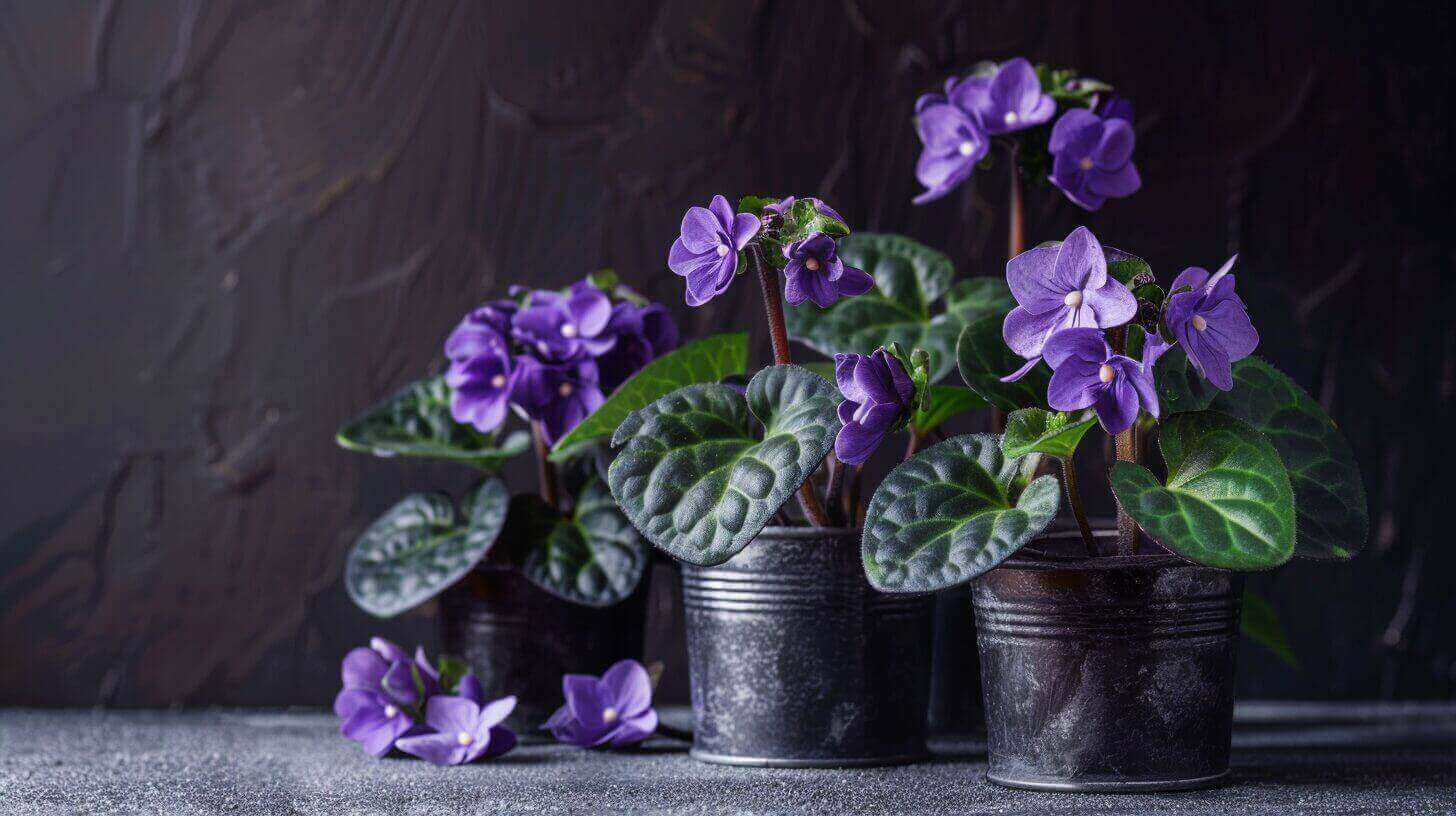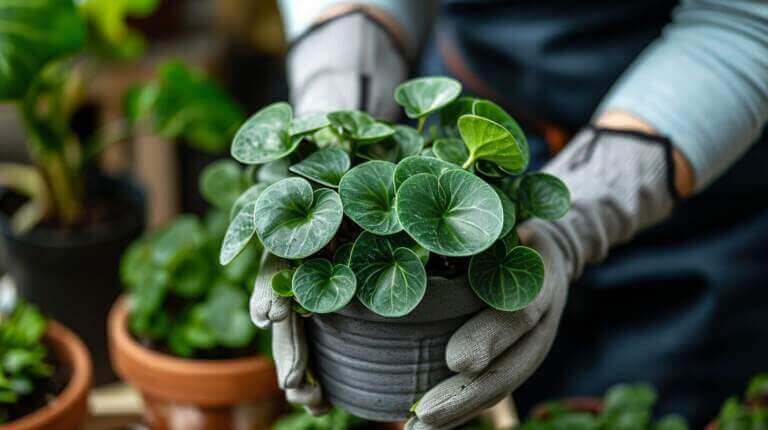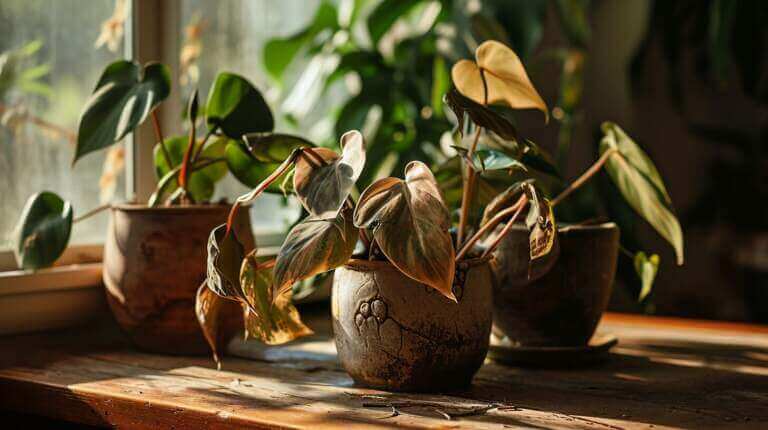How to Revive a Wilting, Neglected, or Dying African Violet Back To Life
I am a professional copywriting journalist, and in this article, I will guide you on how to revive a wilting, neglected, or dying African violet. African violets are stunning plants, but they can suffer from neglect or improper care, leading to wilting and even death. By understanding the signs of a dying African violet and implementing the right techniques, you can bring your plant back to life and restore its glory.
Key Takeaways:
- Recognize the signs of a dying African violet, such as flower loss, limp blooms, crown and stem rot, burnt leaf tips, drooping leaves, white leaves and flowers, and brown spots on leaves.
- Revive a wilting African violet by providing adequate water, proper lighting, appropriate fertilization, maintaining humidity levels, and considering repotting if needed.
- Prevent African violet problems by practicing proper watering techniques, providing the right amount of sunlight, maintaining humidity levels, ensuring proper soil drainage, and fertilizing appropriately.
- Follow tips for African violet care, including watering guidelines, sunlight requirements, fertilization techniques, repotting advice, temperature considerations, deadheading tips, and pest control measures.
- By following these tips, you can ensure that your African violet stays healthy and vibrant.
Signs of African Violet Is Dying
If you notice any of the following signs in your African violet, it may be an indication that your plant is dying and in need of immediate attention:
- Flower Loss or Limp Blooms: A significant decrease in the number of flowers or blooms that are wilting and drooping can be a clear sign of distress.
- Crown and Stem Rot: If you observe a mushy or rotting crown or stems, it is likely that your African violet is experiencing crown and stem rot, a serious condition that can lead to plant death.
- Burnt Leaf Tips: Brown or blackened leaf tips can signal dehydration or nutrient deficiency, both of which can be detrimental to your African violet’s health.
- Drooping Leaves: Leaves that appear weak, limp, or droopy indicate that your plant is not receiving adequate water or is suffering from root damage.
- White Leaves and Flowers: If your African violet’s leaves or flowers turn white or pale, it may be a sign of a fungal infection or nutrient deficiency.
- Brown Spots on Leaves: Brown spots or lesions on the leaves can indicate fungal or bacterial infections, which can quickly spread and lead to plant death if left untreated.
By paying close attention to these signs and taking immediate action, you can increase the chances of saving your African violet and bringing it back to health.
Table: Signs of a Dying African Violet
| Signs | Description |
|---|---|
| Flower Loss or Limp Blooms | A significant decrease in the number of flowers or blooms that are wilting and drooping. |
| Crown and Stem Rot | Mushy or rotting crown or stems. |
| Burnt Leaf Tips | Brown or blackened leaf tips. |
| Drooping Leaves | Leaves that appear weak, limp, or droopy. |
| White Leaves and Flowers | Leaves or flowers that turn white or pale. |
| Brown Spots on Leaves | Brown spots or lesions on the leaves. |
Remember, early detection and prompt intervention are key to saving your African violet from further decline and restoring it to its former glory.
Reviving a Wilting African Violet Plant
When you notice your African violet wilting, it’s crucial to take action promptly to revive it. The key to restoring a wilting African violet lies in providing the right care and attention. Here are some essential steps you can take to help your plant regain its health and vitality:
- Water: Ensure that your African violet receives adequate water. Overwatering can lead to root rot, while underwatering can cause wilting. Find the right balance by checking the moisture level of the soil and watering when it feels slightly dry to the touch.
- Light: African violets thrive in bright, indirect light. Place your plant near a window where it can receive sufficient light, but avoid exposing it to direct sunlight, as it can cause leaf burn.
- Fertilize: Regular fertilization is essential for the health of your African violet. Use a balanced fertilizer specifically formulated for African violets and follow the instructions on the packaging for proper application.
- Humidity: African violets prefer high humidity levels. To increase humidity around your plant, you can place a tray filled with water near the plant or use a humidifier in the room.
- Repot: If your African violet is severely wilted and root-bound, it may benefit from repotting. Choose a pot that is slightly larger than the current one, and use a well-draining potting mix formulated for African violets.
Table: Reviving a Wilting African Violet
| Care Step | Description |
|---|---|
| Water | Ensure proper watering to maintain the right moisture level in the soil. |
| Light | Provide bright, indirect light to promote healthy growth without causing leaf burn. |
| Fertilize | Feed your African violet with a balanced fertilizer designed for its specific needs. |
| Humidity | Increase humidity levels around the plant to create a favorable environment. |
| Repot | If necessary, repot your African violet in a larger pot with well-draining soil. |
Preventing African Violet Problems
To keep your African violet healthy and thriving, it is essential to prevent common problems that can arise. By following a few simple steps, you can ensure that your plant receives the proper care it needs. Here are some key strategies to prevent African violet problems:
Proper Watering:
Watering is crucial for the health of your African violet, but it’s important to find the right balance. Overwatering can lead to root rot, while underwatering can cause wilting and dehydration. To prevent these issues, make sure to water your plant when the top inch of soil feels dry to the touch. Use room-temperature water and water directly into the soil, avoiding the leaves to prevent fungal diseases.
Sunlight:
African violets thrive in bright, indirect light. However, exposing them to direct sunlight can cause leaf burn. Place your plant near a window that receives filtered or diffused light, or use fluorescent grow lights to provide the right amount of brightness. Rotate the plant regularly to ensure even sunlight exposure on all sides.
Humidity:
African violets prefer a humid environment, as they naturally grow in tropical regions. To increase humidity around the plant, you can place it on a tray filled with pebbles and water. As the water evaporates, it creates a humid microclimate. Alternatively, you can use a room humidifier or mist the leaves with water occasionally.
Soil Drainage:
Good soil drainage is crucial for preventing root rot and other issues. Choose a well-draining potting mix specifically formulated for African violets. Avoid using garden soil or heavy potting mixes that can retain excessive moisture. Ensure that your pot has drainage holes to allow excess water to escape.
Fertilization:
African violets benefit from regular fertilization to maintain their health and promote blooming. Use a balanced, water-soluble fertilizer specifically designed for African violets. Follow the instructions on the packaging for frequency and dosage. Overfertilization can lead to salt buildup and damage the roots, so it’s important to fertilize in moderation.
By implementing these preventative measures, you can help your African violet avoid common problems and flourish in your care. Remember to observe your plant regularly, as early detection of any issues will make it easier to address them and keep your African violet thriving.
Tips for African Violet Care
When it comes to caring for your African violet, there are a few key factors to keep in mind. First and foremost is water. These delicate plants require consistent moisture, but be careful not to overwater. Make sure the soil is moist, but not saturated. It’s best to water from the bottom to avoid getting the leaves wet, as this can encourage disease.
Sunlight is another critical element for African violets. They thrive in bright, indirect light. Place your plant near a window with filtered sunlight, or use a fluorescent grow light. Avoid exposing your African violet to direct sunlight, as it can cause leaf burn.
Fertilizer is essential for providing the necessary nutrients to keep your African violet healthy and blooming. Use a balanced, water-soluble fertilizer specifically formulated for African violets. Follow the instructions on the package for proper dosage and frequency of application.
Repotting your African violet is necessary when it becomes root-bound or the soil becomes compacted. This is typically done once a year or as needed. Choose a pot that is slightly larger than the current one and use a well-draining potting mix designed for African violets. Gently remove the plant from its current pot, loosen the roots, and place it in the new pot, making sure it sits at the same depth as before.
To ensure optimal growth, maintain a temperature range of 65-75°F (18-24°C). Avoid exposing your African violet to extreme temperature fluctuations, such as drafts or cold windowsills. Deadheading is also important for encouraging new blooms. Remove faded flowers by pinching them off at the base, taking care not to damage the healthy foliage.
Finally, pest control is crucial for keeping your African violet pest-free. Common pests include aphids, spider mites, and mealybugs. Regularly inspect your plant for any signs of infestation, such as sticky residue, webbing, or tiny insects. If pests are present, treat them with an appropriate insecticidal soap or oil, following the instructions carefully.
FAQ
What are the signs of a dying African violet?
The signs of a dying African violet include flower loss or limp blooms, crown and stem rot, burnt leaf tips, drooping leaves, white leaves and flowers, and brown spots on leaves.
How can I revive a wilting African violet?
To revive a wilting African violet, you need to provide it with adequate water, the right amount of light, proper fertilization, maintain humidity levels, and consider repotting if necessary.
How can I prevent problems with my African violet?
To prevent problems with your African violet, practice proper watering techniques, provide the right amount of sunlight, maintain humidity levels, ensure proper soil drainage, and fertilize appropriately.
What are some tips for proper African violet care?
Proper African violet care includes following watering guidelines, ensuring adequate sunlight, fertilizing correctly, knowing when to repot, considering temperature requirements, deadheading spent blooms, and implementing pest control measures.







